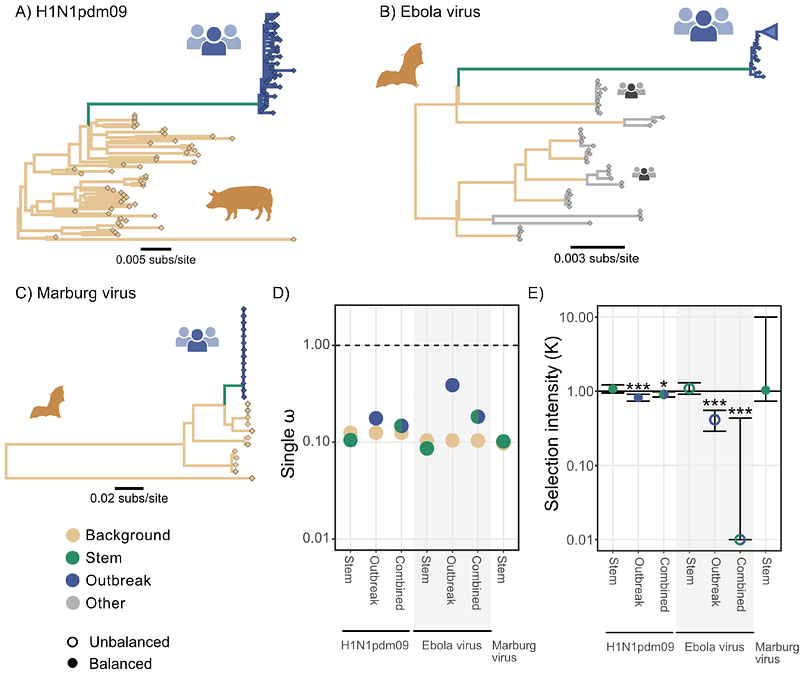Dynamics of natural selection preceding human viral epidemics and pandemics.

Dynamics of natural selection preceding human viral epidemics and pandemics.
Havens, J. L.; Pond, S. L. K.; Zehr, J.; Pekar, J. E.; Parker, E.; Worobey, M.; Andersen, K. G.; Wertheim, J. O.
AbstractUsing a phylogenetic framework to characterize natural selection, we investigate the hypothesis that zoonotic viruses require adaptation prior to zoonosis to sustain human-to-human transmission. Examining the zoonotic emergence of Ebola virus, Marburg virus, influenza A virus, SARS-CoV, and SARS-CoV-2, we find no evidence of a change in the intensity of natural selection immediately prior to a host switch, compared with typical selection within reservoir hosts. We conclude that extensive pre-zoonotic adaptation is not necessary for human-to-human transmission of zoonotic viruses. In contrast, the reemergence of H1N1 influenza A virus in 1977 showed a change in selection, consistent with the hypothesis of passage in a laboratory setting prior to its reintroduction into the human population, purportedly during a vaccine trial. Holistic phylogenetic analysis of selection regimes can be used to detect evolutionary signals of host switching or laboratory passage, providing insight into the circumstances of past and future viral emergence.